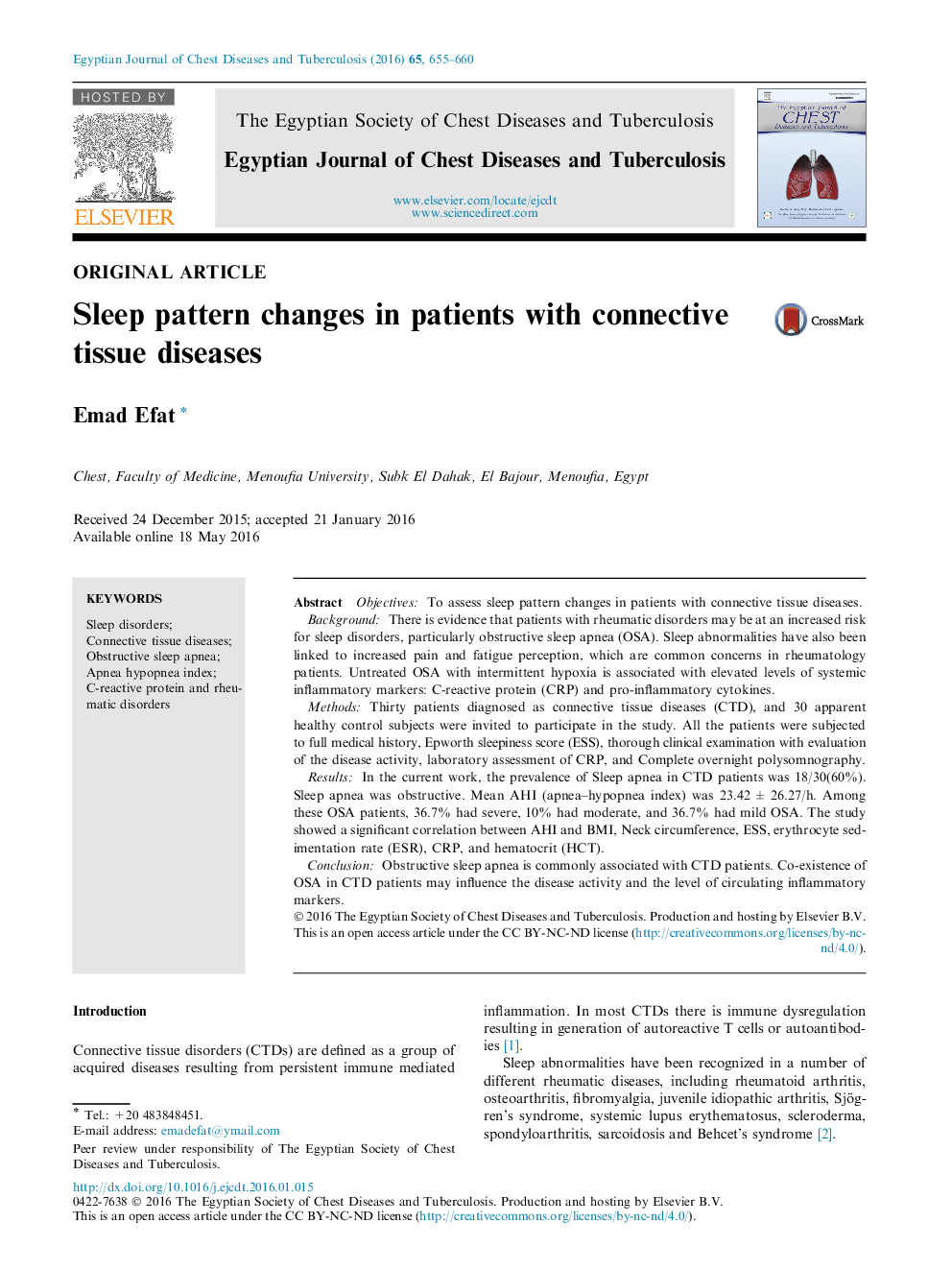| Article ID | Journal | Published Year | Pages | File Type |
|---|---|---|---|---|
| 3399828 | Egyptian Journal of Chest Diseases and Tuberculosis | 2016 | 6 Pages |
ObjectivesTo assess sleep pattern changes in patients with connective tissue diseases.BackgroundThere is evidence that patients with rheumatic disorders may be at an increased risk for sleep disorders, particularly obstructive sleep apnea (OSA). Sleep abnormalities have also been linked to increased pain and fatigue perception, which are common concerns in rheumatology patients. Untreated OSA with intermittent hypoxia is associated with elevated levels of systemic inflammatory markers: C-reactive protein (CRP) and pro-inflammatory cytokines.MethodsThirty patients diagnosed as connective tissue diseases (CTD), and 30 apparent healthy control subjects were invited to participate in the study. All the patients were subjected to full medical history, Epworth sleepiness score (ESS), thorough clinical examination with evaluation of the disease activity, laboratory assessment of CRP, and Complete overnight polysomnography.ResultsIn the current work, the prevalence of Sleep apnea in CTD patients was 18/30(60%). Sleep apnea was obstructive. Mean AHI (apnea–hypopnea index) was 23.42 ± 26.27/h. Among these OSA patients, 36.7% had severe, 10% had moderate, and 36.7% had mild OSA. The study showed a significant correlation between AHI and BMI, Neck circumference, ESS, erythrocyte sedimentation rate (ESR), CRP, and hematocrit (HCT).ConclusionObstructive sleep apnea is commonly associated with CTD patients. Co-existence of OSA in CTD patients may influence the disease activity and the level of circulating inflammatory markers.
